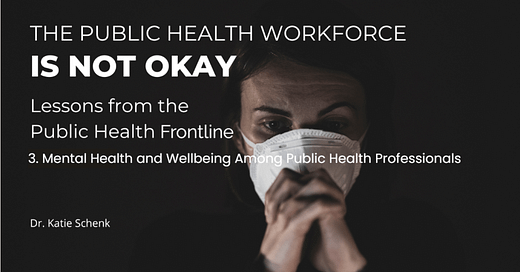MENTAL HEALTH AND WELLBEING AMONG PUBLIC HEALTH PROFESSIONALS
The public health workforce is not okay. In this series of articles, I will share what it has been like to work on the public health frontline during the COVID-19 pandemic and how these experiences have changed me forever. I will share the lessons I have learned and what I want the people around me to know, both inside and outside of the public health s…
Keep reading with a 7-day free trial
Subscribe to The Public Health Workforce is Not OK to keep reading this post and get 7 days of free access to the full post archives.




